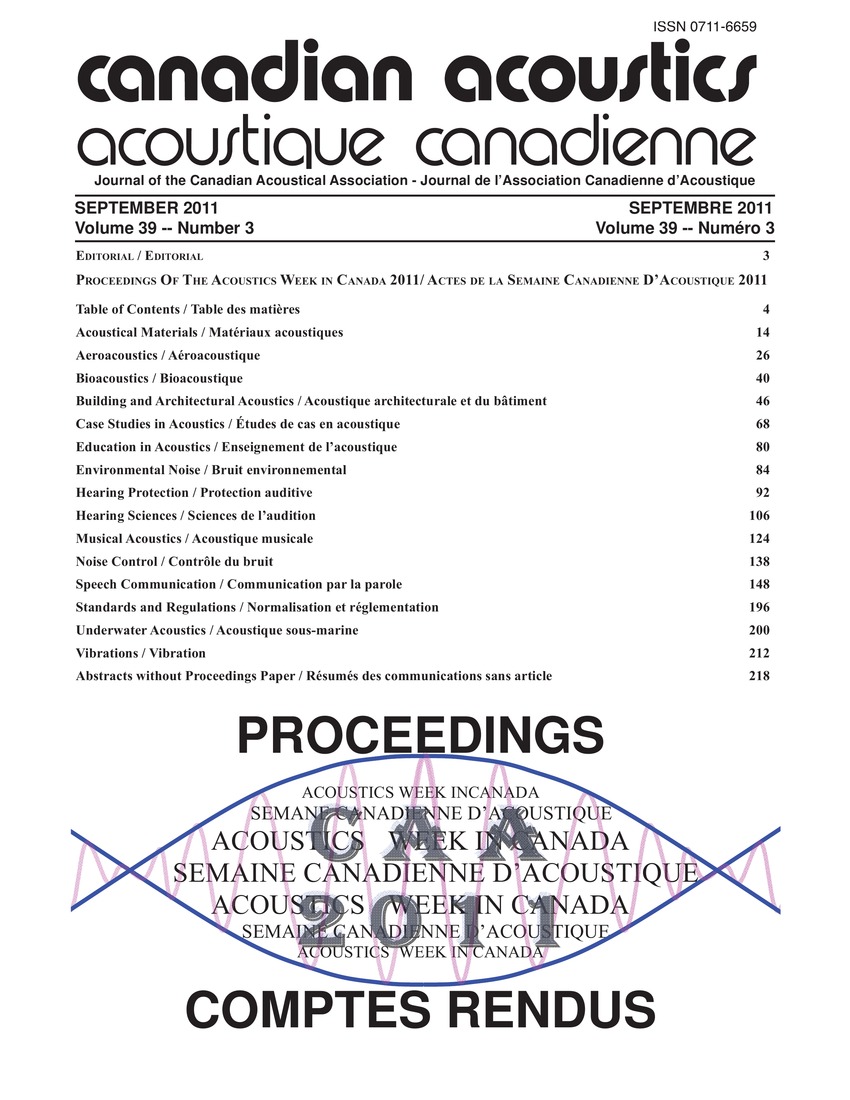Three-microphone two-cavity method for measuring sound transmission loss in a modified impedance tube
Keywords:
Acoustic impedance, Loudspeakers, Microphones, A-plane, Acoustic materials, Finite length, Impedance tubes, Normal incidence, Sound insulation property, Sound transmission loss, Step discontinuity, Test samples, Two microphones, Two-cavityAbstract
The normal incidence sound transmission loss (nSTL) is an important indicator to assess the sound insulation property of acoustic materials. The apparatus consists of a finite length rigid walled impedance tube with circularly shaped and uniform inner cross-section. The tube features a loudspeaker at one end and a movable piston at the other end. The loudspeaker is used to generate a plane wave field in the impedance tube. There are two microphones flush mounted upstream the test sample and one microphone flush mounted on the rigid end. Next, a 20-mm thick step discontinuity seeing as a non-symmetrical sample is tested and compared to the standard 4M2L method and 3M-TMTC method. One can note that similar results are obtained between the 3M2L and 4M2L methods, however 4M2L is noisier compared to 3M2L.Additional Files
Published
How to Cite
Issue
Section
License
Author Licensing Addendum
This Licensing Addendum ("Addendum") is entered into between the undersigned Author(s) and Canadian Acoustics journal published by the Canadian Acoustical Association (hereinafter referred to as the "Publisher"). The Author(s) and the Publisher agree as follows:
-
Retained Rights: The Author(s) retain(s) the following rights:
- The right to reproduce, distribute, and publicly display the Work on the Author's personal website or the website of the Author's institution.
- The right to use the Work in the Author's teaching activities and presentations.
- The right to include the Work in a compilation for the Author's personal use, not for sale.
-
Grant of License: The Author(s) grant(s) to the Publisher a worldwide exclusive license to publish, reproduce, distribute, and display the Work in Canadian Acoustics and any other formats and media deemed appropriate by the Publisher.
-
Attribution: The Publisher agrees to include proper attribution to the Author(s) in all publications and reproductions of the Work.
-
No Conflict: This Addendum is intended to be in harmony with, and not in conflict with, the terms and conditions of the original agreement entered into between the Author(s) and the Publisher.
-
Copyright Clause: Copyright on articles is held by the Author(s). The corresponding Author has the right to grant on behalf of all Authors and does grant on behalf of all Authors, a worldwide exclusive license to the Publisher and its licensees in perpetuity, in all forms, formats, and media (whether known now or created in the future), including but not limited to the rights to publish, reproduce, distribute, display, store, translate, create adaptations, reprints, include within collections, and create summaries, extracts, and/or abstracts of the Contribution.


